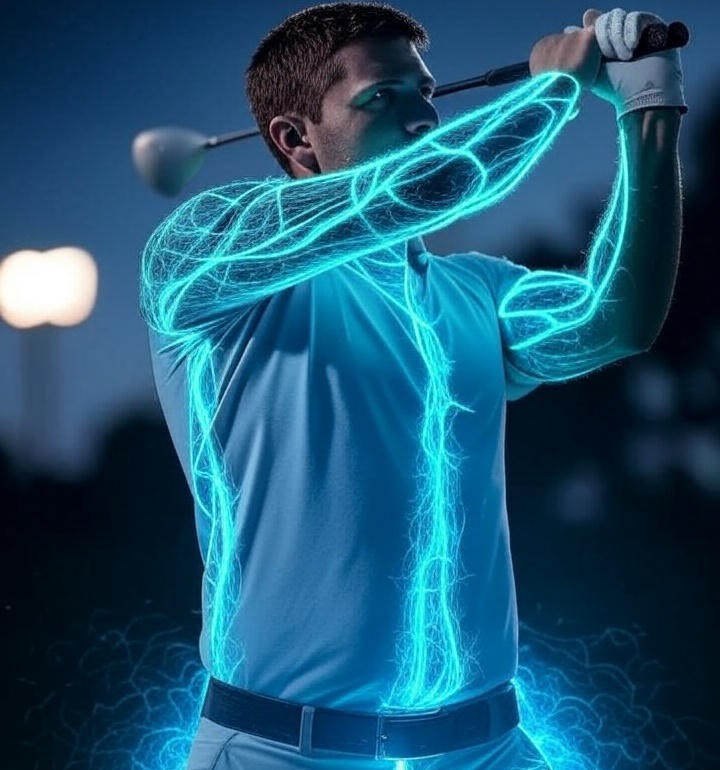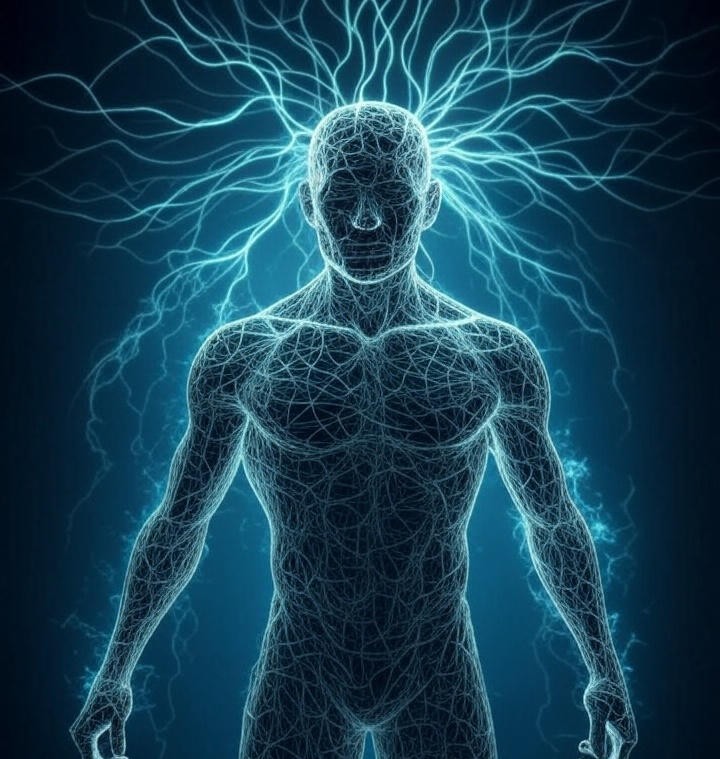Imagine the scene, a familiar ritual for any dedicated athlete or coach: huddled around a screen, replaying a movement in slow motion. The flaw is obvious, stark and clear on the screen. “See?” the coach says, drawing a line across the tablet, “Your hips are stalling right there.” The athlete nods, studies the image, and feels a flash of insight. They see the problem. They understand the geometry of the error.
They return to their stance, determined to fix it. They swing, pitch, or jump, trying to hold that visual correction in their mind. But the result is the same. The change doesn't stick. The insight gained from the replay vanishes in the split-second violence of the actual movement.
This cycle of reviewing, understanding, and failing to execute is one of the most persistent frustrations in skill acquisition. It stems from a fundamental misunderstanding of the tool. Video analysis is a powerful technology, a revolution that for the first time gave us an objective look at our own motion. It is an excellent map of where we have been.
But a map of the past, however detailed, is not a guide to the future. To truly improve, athletes need more than a review of what went wrong; they need clear, in-the-moment guidance on how to make it right. They need a GPS.

Part 1: The Power and Paradox of Video Analysis
We must begin by acknowledging the immense value of video replay. It was a paradigm shift that helped solve the foundational problem in coaching: the gap between "feel vs. real." As we explored in our guide on The Athlete as a System, athletes historically had to rely solely on a coach’s eye and their own internal sensations—a notoriously buggy and subjective system. Video provided the first piece of undeniable, objective truth. It allowed an athlete to see, for the first time, that the swing that felt on-plane was, in reality, far from it.
This visual evidence is a critical first step. It provides the initial diagnosis. But as a training tool for embedding new motor patterns, its limitations have become increasingly clear.
- It’s a Lagging Indicator: Video analysis is, by its very nature, an autopsy of a past event. The mistake has already been made. The incorrect motor pattern, with its corresponding neural signal, has already been fired and completed. By the time you review the footage, you are analyzing history. The brain learns best when feedback is immediate, allowing it to adjust the circuit as it forms.
- It Creates Cognitive Overload: The process of watching a replay, internalizing the visual correction, and then attempting to apply it during a high-speed, dynamic movement places an immense burden on working memory. This is the "paralysis by analysis" that plagues so many athletes. The conscious brain simply cannot process a complex geometric adjustment while simultaneously executing a movement that should be subconscious.
- The Problem of Translation: This is the most significant failure point. Video provides a visual "what"—what the flaw looks like. But it offers a very poor translation of "how"—how the correct movement should feel. A coach can say, “Get your arm into this position,” and draw a perfect angle on a screen. But how does that angle feel in the athlete’s muscles and joints? This gap between a visual target and a kinesthetic feeling is where most learning breaks down.
- It's Inconvenient in a Live Environment: In a practice setting, stopping to set up a camera and review footage is cumbersome. In a competitive environment, it's impossible. You aren't pulling out your phone to record every shot during a round of golf or every pitch in a bullpen session. This is in stark contrast to wearable sensors, which can track every repetition and provide discreet feedback when you need it most.
Video analysis gets you to the scene of the crash. It can show you the wreckage in frame-by-frame detail. But it can’t teach you how to drive.

Part 2: The Neurological Shortcut: The Power of Real-Time Feedback
The next paradigm in skill acquisition is built on a simple but profound principle, famously articulated by Anders Ericsson, the pioneering researcher of expert performance: mastery requires "immediate, informative feedback." This isn't just a coaching preference; it's a fundamental requirement of how the brain’s neural circuits are built and refined, a concept we dive into in our article on neuroplasticity and faster skill acquisition.
Real-time feedback, delivered by modern wearable sensors, provides this neurological shortcut. By translating physical movement into objective data immediately after a repetition, it fundamentally changes the learning process.
It solves the translation problem by shifting from vague, qualitative advice to clear, quantitative guidance. A coach’s well-meaning suggestion to "rotate more" becomes a precise, actionable goal. The system provides objective data, often through intuitive visual graphs, showing exactly how the movement was executed relative to the target. This removes ambiguity and gives the athlete a clear benchmark for success on every single repetition.
This dramatically shortens the feedback loop, allowing the brain to make adjustments when the neural pathways for the movement are still active and primed for change. With every swing, the athlete gets an instant data point that closes the "feel vs. real" gap. They begin to associate the feeling of a specific movement with the reality of an objective outcome.
This process is like tuning an instrument. The athlete makes a small adjustment, the sensor provides an objective reading, and they adjust again. Repetition by repetition, their internal sense of proprioception is recalibrated until the correct movement and the correct feeling become one and the same. They are no longer guessing what the right move feels like; they are being guided to it with scientific precision.

Part 3: The GOAT System: A Complete Learning Engine
This immediate, sensor-driven feedback loop is a powerful tool. But on its own, it’s still just a more advanced form of measurement. A true breakthrough in performance requires integrating this feedback into a complete system that understands how the brain actually learns, masters, and automates new skills. It requires an engine, not just a gauge.
The GOAT Platform was engineered to be this complete engine. Real-time feedback is the critical refinement stage of a much larger, more sophisticated process.
1. The Only User-Generated Video-to-Sensor Platform
The ultimate goal is to bridge the gap between seeing a movement you want to emulate and being able to perform it yourself. The GOAT Platform is the first and only system designed around a user-generated model to make this possible. Our intelligent engine empowers users to start with any model of excellence—any video they choose—and deconstruct that movement to create a personalized, sensor-guided training plan. This transforms passive video consumption into active, focused, and measurable practice, driven entirely by the user's own choice of inspiration.
2. The Archetype™ Engine: Solving the "Black Box" Problem
A common failure of other systems is that their feedback is opaque. They provide a number, but where did that target number come from? The GOAT Platform solves this with the GOAT Archetype™ Performance Modeling Engine. Our system isn’t an inscrutable algorithm making judgments. It’s an intelligent analytics engine trained on the specific philosophy of a human expert. When you get feedback, you're not being compared to a generic model; you're being guided by the philosophy of a coach you trust, whose expertise has been encoded into the platform.
3. A Foundation in Neuroscience
The entire system is built on a deep understanding of neuroplasticity. The process begins with the GOAT Priming Engine™, a proprietary protocol designed to install a flawless blueprint of the desired skill onto your nervous system before physical practice begins. By leveraging principles of slow-motion observation to activate the brain's Mirror Neuron System, we create a high-fidelity motor program for the sensors to then refine. The feedback isn't happening in a vacuum; it's perfecting a pattern that the brain has already been primed to learn, which is a key reason for the hypothesized 15-20x acceleration in skill acquisition detailed in The 20x Hypothesis.
Conclusion: Stop Reviewing, Start Creating
For too long, athletes have been trapped in a cycle of reviewing the past. Video analysis has shown us our mistakes with perfect clarity, but it has often left us stranded, unable to navigate the complex path toward correction. It has given us a library of maps but no vehicle.
The path to mastery is not found in endless replay. It is forged in the present moment, through focused, deliberate practice guided by immediate and objective truth. A true performance system must do more than provide feedback; it must create a complete learning environment that prepares the brain to learn, provides a clear path to improvement, and offers the precise, real-time guidance to make that improvement permanent.
This is the end of guesswork. This is the beginning of a systematic, scientifically-validated process for achieving your potential. The choice is no longer between frustration and hope. It is between looking backward at what you did and looking forward to what you can become.
The path is now clear.
Explore the GOAT Sensor System